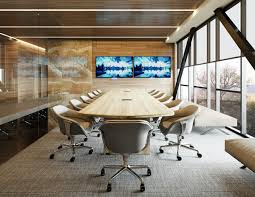The design and aesthetics of office spaces have a significant impact on employee productivity, well-being, and overall work performance. In recent years, modern office furniture has played a pivotal role in creating work environments that are not only visually appealing but also conducive to enhanced productivity. In this article, we will explore the relationship between office aesthetics, modern furniture, and work performance, and how thoughtful design choices can positively influence employees’ daily experiences in the workplace.
1. The Visual Appeal of Modern Furniture:
Modern office furniture is characterized by sleek, clean lines, minimalist design, and contemporary materials. Its visual appeal goes beyond aesthetics; it creates an atmosphere of sophistication and professionalism. Here’s how the visual appeal of modern furniture impacts work performance:
- Professionalism: Modern furniture often conveys a sense of professionalism and attention to detail. Employees are more likely to take their work seriously in an environment that exudes professionalism.
- Impression: The appearance of the office, including furniture, makes a strong impression on clients, partners, and visitors. A well-designed and aesthetically pleasing office can enhance the organization’s reputation.
- Employee Morale: Employees who work in visually appealing spaces tend to have higher morale and take pride in their workplace. This positive attitude can translate into increased engagement and productivity.
2. Ergonomics for Comfort and Productivity:
Modern office furniture prioritizes ergonomics, focusing on comfort and the prevention of physical strain. Ergonomically designed furniture has several positive effects on work performance:
- Reduced Discomfort: Ergonomic chairs, desks, and accessories reduce discomfort, such as back pain and neck strain, allowing employees to work more comfortably for longer periods.
- Increased Focus: Comfortable furniture promotes concentration and helps employees maintain focus on their tasks, leading to increased productivity.
- Fewer Distractions: A well-designed ergonomic workspace minimizes distractions caused by discomfort or physical strain, allowing employees to remain on task and be more productive.
- Health Benefits: Ergonomically designed furniture can contribute to better employee health, reducing the number of sick days and improving overall work performance.
3. Open and Collaborative Workspaces:
Modern office furniture often complements open and collaborative workspace layouts, fostering interaction and teamwork among employees:
- Benching Systems: Modern benching systems with shared workstations and minimal dividers encourage collaboration and communication among team members, leading to more efficient project work.
- Collaborative Seating: Comfortable and stylish collaborative seating options, such as lounge chairs and modular sofas, provide spaces for impromptu meetings and brainstorming sessions, enhancing teamwork.
- Mobile Furniture: Modern furniture often includes mobile elements like rolling tables and chairs, making it easy for employees to reconfigure their workspace to accommodate collaborative activities.
- Versatile Meeting Spaces: Well-designed modern meeting spaces with adaptable furniture can host a variety of meetings and discussions, promoting effective communication and idea sharing.
4. Natural Light and Modern Furniture:
Many modern office designs prioritize access to natural light, and modern furniture complements this approach:
- Glass Elements: Modern office furniture often incorporates glass elements in desks, partitions, and walls, allowing natural light to flow through the space, creating a brighter and more inviting atmosphere.
- Minimalist Design: The minimalist design of modern furniture complements the openness and brightness of spaces illuminated by natural light, creating a harmonious and uplifting environment.
- Employee Well-being: Exposure to natural light has been linked to improved mood, well-being, and productivity. Modern furniture helps ensure that employees can enjoy the benefits of natural light.
5. Flexibility and Adaptability:
Modern office furniture is known for its flexibility and adaptability, which can positively affect work performance:
- Adjustable Desks: Modern desks often come with adjustable height features, allowing employees to switch between sitting and standing positions, reducing discomfort and enhancing focus.
- Modular Furniture: Modular furniture systems offer the flexibility to reconfigure workspaces as needed, accommodating changes in team size or project requirements without major disruptions.
- Mobile Workstations: Mobile furniture, such as rolling desks and chairs, makes it easy for employees to create impromptu workstations or collaborative areas, adapting to their immediate needs.
- Workspace Personalization: Employees can personalize their workspace with modern furniture, adjusting desk height, monitor placement, and seating preferences for optimal comfort and productivity.
6. Technology Integration:
Modern office furniture seamlessly integrates technology, enhancing work performance in the digital age:
- Cable Management: Furniture with built-in cable management systems keeps cords and cables organized and out of sight, reducing clutter and distractions.
- Power and Data Access: Integrated power outlets, USB ports, and data connectivity in furniture facilitate easy access to technology resources, allowing employees to work efficiently.
- Tech-Friendly Layouts: Modern furniture can be designed to accommodate technology, such as adjustable monitor arms and built-in docking stations for laptops and mobile devices.
- Smart Furniture: Some modern furniture incorporates smart features, such as adjustable desks that can be programmed to remember preferred settings, optimizing ergonomics for individual users.
7. Branding and Corporate Identity:
Modern furniture can be customized to reflect a company’s branding and corporate identity:
- Color and Finish Options: Many modern furniture manufacturers offer a range of color and finish options, allowing organizations to incorporate their brand colors and design preferences into the workspace.
- Logo and Branding Elements: Customized furniture can include the organization’s logo, reinforcing brand identity throughout the office.
- Design Consistency: Using modern furniture consistently throughout the workspace ensures a cohesive and professional appearance, reinforcing the organization’s brand image.
8. Reduced Clutter and Distractions:
Modern furniture often features sleek designs with integrated storage solutions, reducing clutter and distractions in the workplace:
- Storage Integration: Desks with integrated storage, such as drawers and filing cabinets. Help employees keep their workspace organized, reducing distractions caused by clutter.
- Clean Lines: Modern furniture’s clean lines and minimalist design contribute to a clutter-free aesthetic, creating an environment that supports focused work.
- Noise Reduction: Some modern furniture incorporates acoustic properties, helping to reduce noise and distractions in open-plan office settings.
9. Employee Well-being and Satisfaction:
Workspaces designed with modern furniture can have a significant impact on employee well-being and job satisfaction:
- Comfort: Ergonomically designed furniture promotes employee comfort, reducing physical strain and discomfort, which can contribute to overall well-being.
- Mood Enhancement: Aesthetically pleasing and well-lit spaces with modern furniture have been shown to improve mood and job satisfaction.
- Flexibility: Employees appreciate the flexibility and adaptability of modern furniture. Which allows them to personalize their workspace and work in ways that suit their preferences.
- Reduced Stress: Minimizing distractions, providing comfortable furniture, and offering spaces for relaxation can reduce stress levels and improve overall well-being.
10. Sustainability and Environmental Impact:
Many modern office furniture manufacturers prioritize sustainability and environmental responsibility in their design and production processes:
- Sustainable Materials: Modern furniture often incorporates sustainable materials, such as recycled content, low-VOC finishes, and responsibly sourced wood.
- Longevity: Durable and well-crafted modern furniture tends to have a longer lifespan. Reducing the frequency of replacements and the environmental impact of disposal.
- Certifications: Look for modern furniture with certifications like LEED (Leadership in Energy and Environmental Design) or Green guard. Which indicate environmentally friendly and low-emission products.
In conclusion, modern office furniture plays a crucial role in influencing work performance and the overall work experience of employees. Through its visual appeal, ergonomic design, adaptability, integration of technology, and impact on employee well-being. Modern furniture contributes to a more productive and satisfying workplace. By investing in well-designed and aesthetically pleasing furniture, organizations can create an environment that fosters creativity, collaboration, and efficiency. Ultimately benefiting both employees and the organization as a whole.



